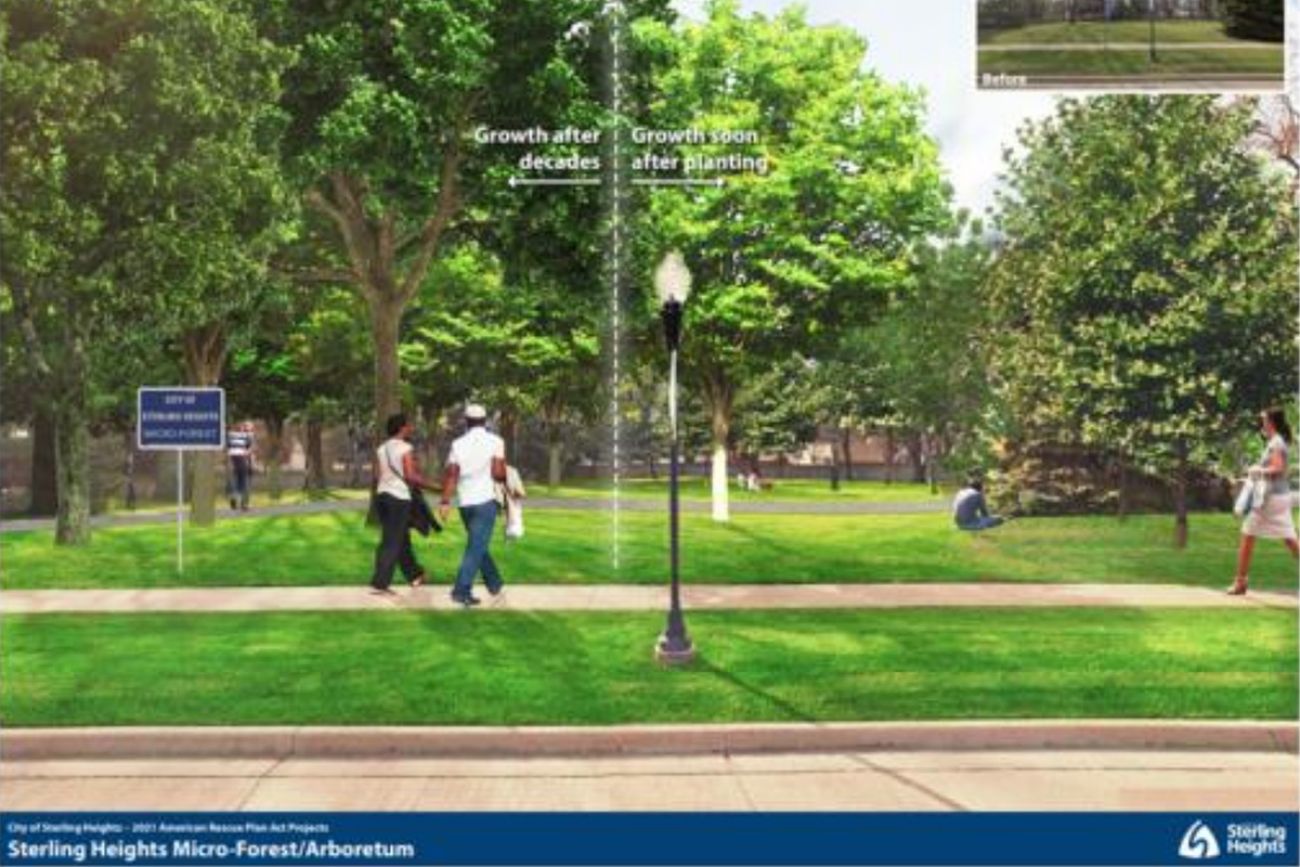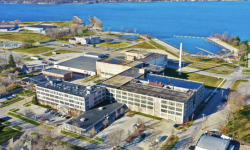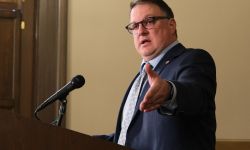How to spend $10B: Stimulus funds bonuses, water, monthly checks in Michigan

- Michigan, large cities and counties are beginning to spend a combined $9.9 billion in federal recovery funds
- Nearly 900 projects planned so far, ranging from ‘micro-forest amenities’ to a ‘guaranteed basic income’ program
- Some governments slow to spend amid contractor competition
LANSING — Michigan and local governments are tapping into billions of dollars in federal stimulus funds with plans to do far more than dig out from the COVID-19 pandemic.
Instead, spending reports show many Michigan communities intend to use their onetime windfalls to address everything from gun violence and home repairs to “micro-forests” and even the state’s first attempt at a “guaranteed basic income” program for the poor.
The array of projects green-lit by local officials so far — 876 and counting statewide — reflects both pent-up demand and creative thinking from government officials who have traditionally been “resource starved,” said Shanna Draheim, director of policy research labs for the Michigan Municipal League.
Related:
- Michigan may spend big on passenger trains, eying service to Canada, Up North
- Michigan Democrats want to make it easier to give to unions (who give to Dems)
- Michigan Senate votes to bar discrimination over Black hairstyles
“These are things that I think felt really out of reach for a lot of our communities for a long time,” Draheim told Bridge Michigan. “And so for them to finally be able to do some very future-focused projects with these (dollars could have an) incredible impact.”
The spending is just starting, however.
While President Joe Biden signed the American Rescue Plan Act into law in March 2021, state and local governments didn’t get the second half of their Coronavirus Fiscal Recovery Funds until last spring. Many also spent months gathering resident input before beginning to approve projects.
By the beginning of 2023, Michigan and its 63 largest counties and cities had only spent about $2.2 billion of the nearly $10 billion they were collectively awarded, according to a Bridge analysis of data from the U.S. Treasury. Another $4 billion had been budgeted but not yet spent.
Local officials that have long complained about state funding are now struggling to compete for contractors, partners and employees for projects they are planning, said Eric Scorsone, director of the Michigan State University Extension Center for Local Government Finance and Policy,
“It is quite challenging right now for people to get this money spent,” he said.
Officials will have until the end of 2024 to “obligate” their funds and until the end of 2026 to spend the money — unless the federal government decides to claw back unspent money sooner. That’s something local governments fear given the ongoing debt ceiling debate in Washington D.C., Scorsone said.
“There's so much money to be spent,” he said, noting it will take several years to evaluate the full impact of the federal largesse.
“Did we build in a way that made Michigan a better place, a more attractive place to live and work? That's hard to (predict) right now.”
Below, you’ll find some of the initial recovery fund spending plans for the state and its 68 largest local governments through the end of 2022, as reported to the federal government. (Smaller communities are not required to report as many details or as frequently).
‘Negative economic impacts’
Across Michigan, the largest share of federal funding – $2.2 billion, has so far been earmarked for projects to address “negative economic impacts” of the pandemic on households, small businesses and nonprofits.
Of that, about $1 billion has been “obligated” through the end of 2022, and $716 million had been spent.
The plans include $3.8 million for home improvements in Saginaw, $8.6 million to provide Flint residents with a $300 water bill credit — the equivalent of roughly three months of free water — and $88 million for blight remediation in Detroit.
Guaranteed Basic Income
In Ann Arbor, city officials decided to use $1.6 million of the city’s $24 million in fiscal recovery funding to create what will be the state’s first guaranteed basic income program.
For two years, the city will provide 100 low-income families with a monthly $500 check — no strings attached.
City Council member Linh Song proposed the pilot program last spring as she saw Congress let an enhanced child tax credit and COVID eviction moratorium expire.
“Even though Ann Arbor is an economic engine of (Washtenaw) County and fairly wealthy… there are folks who can barely afford to stay here or have been pushed out,” Song told Bridge Michigan, explaining her motivation.
“I really wanted to see (the pandemic recovery money) hit families locally to address these really immediate needs.”
Guaranteed Basic Income, and its broader cousin Universal Basic Income, aren’t new concepts. Alaska has used oil revenues to pay residents an annual dividend since 1982. And presidential candidate Andrew Yang turned heads by proposing a national “Freedom Dividend” in his 2020 campaign
Stockton, California, began a municipal basic income program for low-income residents in 2019 and dozens of other cities have followed. Lansing Mayor Andy Schor proposed using federal recovery funds for a similar initiative, and Detroit explored the idea too.
While critics argue the programs could discourage work and are too expensive, early research points to mental health and financial stability benefits for recipients.
More than a year after approving funding for a guaranteed basic income program, Ann Arbor is still in the planning stages.
But on June 5, the City Council is poised to vote on a contract for the University of Michigan’s Poverty Solutions to both administer and evaluate the pilot effort.
“It was really important to the city… that we find a partner who could produce usable social science that can be passed on to other cities or other states or nonprofits who are interested in running their own,” deputy city administrator John Fornier told Bridge.
While initially limited to 100 low-income families, the pilot program could “set the foundation for a larger, longer program that could benefit all families in Ann Arbor,” the city said in a report to the federal government.
‘Micro-forests’
The state and large local governments have so far announced plans to use $1.4 billion in federal stimulus funds to replace revenue lost during the COVID-19 pandemic and provide general government services, including $1.1 billion already spent.
The broad spending category, as defined by the federal government, allows spending on a wide array of projects.
Sterling Heights is spending $1 million of its $19.8 million in federal stimulus funds to create a series of "micro-forests" by planting trees throughout the city.
Locations could include downtown, public parks, corporate campuses, industrial areas and “really, anywhere there is 1,000 square feet of vacant land,” officials said in a federal report.
The project, the city added, “is justified by the tremendous environmental benefits derived from a forest, including cleaner air, a natural water filtration system, a natural air conditioner, a flood mitigation system, a natural habitat for all forms of life, a natural recreational amenity for people seeking peace and quiet.”
Sterling Heights is a dense community that is "pretty much fully built out," Mayor Michael Taylor told Bridge. "Every nook and cranny of the community continues to get developed. But as developers come in, they're clearing trees."
Replacing trees by planting micro-forests will help the city meet sustainability goals and increase quality of life for residents, Taylor said. "And it's great for the environment."
Government jobs, premium pay and lost revenue
The state and local governments are so far planning to use a relatively small portion of their federal recovery funds to plug holes in their own budgets or staffs, including $321 million already spent to make up for lost revenue, $256 million earmarked to hire or retain employees and $24 million to provide premium pay to workers who stayed on the job during the pandemic.
Genesee County was the largest spender on this front, using $7 million to provide bonus pay to more than 1,000 government employees — an average of about $6,500 per county worker.
County government offices closed “for a brief period of time" during the COVID-19 pandemic but quickly re-opened to serve the public, Genesse officials said in a federal spending report.
Employees who returned for in-person work were "an integral part" of keeping the county operational, developing COVID response plans, delivering meals to home-bound residents and helping schedule and administer vaccines, the county added.
"The on-site work of these positions were key to keep the county functioning during this timeframe and there were additional risks for these staff by being in-person in contact with others."
Digging up lead pipes
Heading into 2023, the state of Michigan and its largest local governments had finalized plans to use a combined $1.4 billion in federal recovery funding for infrastructure improvements, according to federal reports.
But only $25 million had been spent.
Much of the money has been set aside for water infrastructure projects, including about $1 billion the state budgeted for new drinking and clean water revolving funds that will be able to loan money to local governments for related projects.
The state also used $92 million to help Detroit and Benton Harbor tear out and replace underground lead service lines.
Other communities including Bay City ($6 million) are using their own federal funds to replace those pipes, as required by 2040 under a rule former Gov. Rick Snyder implemented in the wake of the Flint contamination crisis.
It's a huge undertaking: As of 2021, officials estimated there were still more than 400,000 active lead water lines in communities across the state, posing a potential risk to public health.
"You do tend to see people doing projects that maybe they were planning to do anyway, so they're just using this money to pay for a few miles of road or to fix some lead service lines," Scorsone said. "And that's good. They free up money for other things."
Public health and gun violence
The state and local governments had set aside $788 million in federal recovery dollars for public health initiatives through the end of 2022, and spent about $200 million of that.
Much of that money is intended for direct responses to the pandemic, including a combined $139 million for equipment at nursing homes and other congregate settings. At least two communities -- Saginaw and Lenawee County -- used funding to incentivize government employees to get COVID-19 vaccines.
But local governments also plan to use the stimulus funds to address other public health issues exacerbated by the pandemic, including $20 million for mental health efforts in Oakland County and nearly $8 million for a gun violence reduction plan in Detroit.
Routinely ranked one of the most violent cities in the nation, Detroit plans to buy two new mobile police towers for community events, 75 new vehicle recognition cameras at high-crime intersections and 50 new vehicles for detectives to use during investigations.
The project aims to "reduce gun violence in the city by increasing surveillance capabilities and increasing resources to support fast response to incidents," Detroit said in a recovery fund plan filed with the federal government.
It's part of a larger effort to support "a resilient city with universally vibrant, safe, healthy and beautiful neighborhoods, providing equitable and inclusionary access to economic mobility and social prosperity," officials said.
See what new members are saying about why they donated to Bridge Michigan:
- “In order for this information to be accurate and unbiased it must be underwritten by its readers, not by special interests.” - Larry S.
- “Not many other media sources report on the topics Bridge does.” - Susan B.
- “Your journalism is outstanding and rare these days.” - Mark S.
If you want to ensure the future of nonpartisan, nonprofit Michigan journalism, please become a member today. You, too, will be asked why you donated and maybe we'll feature your quote next time!




